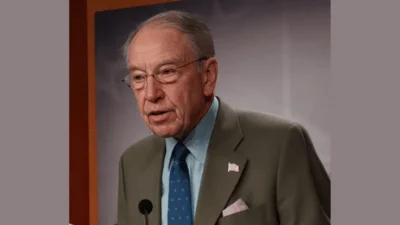The Congressional Record is a unique source of public documentation. It started in 1873, documenting nearly all the major and minor policies being discussed and debated.
“IN SUPPORT OF A CONFLICT RESPONSE FUND AND A COMPREHENSIVE USG APPROACH TO ADDRESSING THE THREAT OF FAILED STATES” mentioning the U.S. Dept of State was published in the Extensions of Remarks section on pages E1109-E1110 on June 9, 2006.
The publication is reproduced in full below:
IN SUPPORT OF A CONFLICT RESPONSE FUND AND A COMPREHENSIVE USG APPROACH
TO ADDRESSING THE THREAT OF FAILED STATES
______
HON. SAM FARR
of california
in the house of representatives
Friday, June 9, 2006
Mr. FARR. Mr. Speaker, in my opinion, the most significant threat to our national security in the 21st Century is from failed countries. Nearly 2 billion people live in countries that are in danger of collapse. According to the 2002 U.S. National Security Strategy, the United States is now threatened less by conquering states than we are by failing ones.
Stop and think about our recent defense and foreign policy obligations--Somalia, Haiti, Bosnia, and Kosovo--and our current engagement in Iraq, Afghanistan, and Sudan. These are all failed states and their instability imperils U.S. national security.
The U.S. defense and foreign policy apparatus formally acknowledged the threat of failed states when the National Security Council directed the State Department to establish a Coordinator for Stabilization and Reconstruction to incorporate ``lessons learned'' from previous stabilization operations so that future U.S. engagements will save lives--both U.S. and indigenous and use U.S. resources judiciously so that failed states don't deteriorate.
In December 2005, the Defense Department issued a directive, 3000.05, that places Stability Operations on par with Combat Operations. These are significant first steps and I commend the Administration, however, much more needs to be done. The first improvement I would recommend is that the State Department not Defense Department be the lead agency for planning and implementing the overall strategy for rebuilding a failed state.
I commend my colleagues on the Subcommittee who have done the best they can with an allocation this year that is $2.4 billion lower than the President's request. Those budget constraints prohibited them from funding the Conflict Response Fund, which would allow State Department reconstruction officials to immediately draw down such resources as necessary to rapidly initiate programs like democratic and electoral reform economic and infrastructure development so that the indigenous population sees tangible improvements.
The second improvement I would recommend is stronger support from the State and Defense Departments for the Master's degree in Stabilization and Reconstruction, being offered by the Naval Postgraduate School in my district. This is the only school in the country where U.S. military and foreign officers are being educated with U.S. civilian agency personnel and the NGO community so they can better understand their respective roles in the classroom rather than the battlefield.
I am glad we are gaining a better understanding of the threat of failed states, so that we can confront the challenges of these threats to U.S. national security.
____________________








